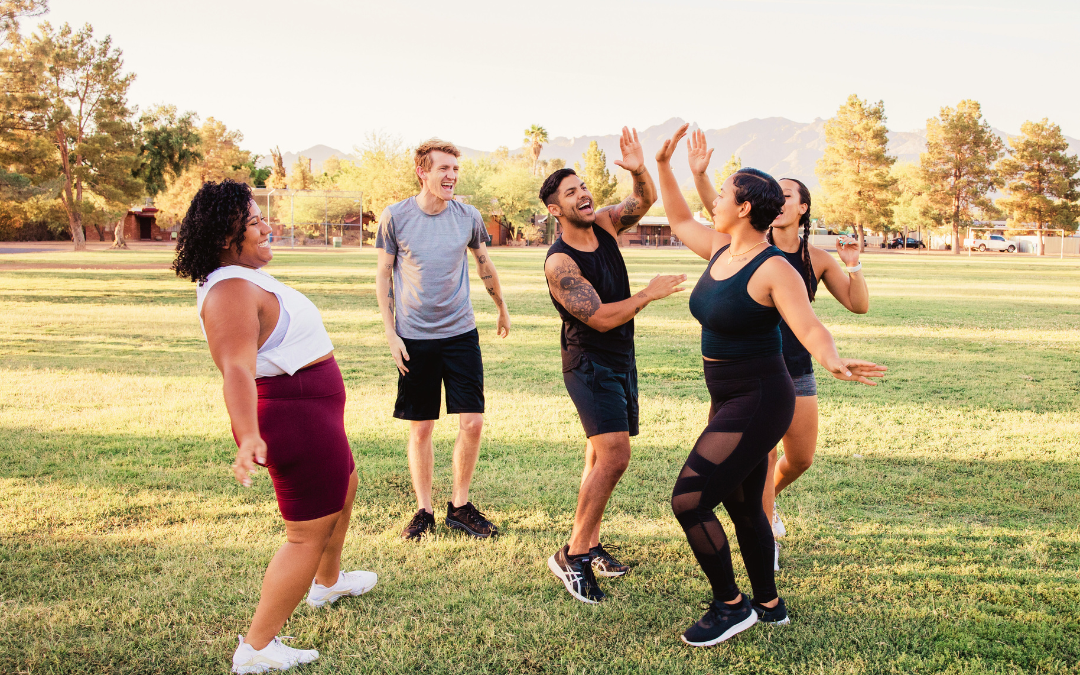The Science Behind Exercise and Health
Key Benefits of Exercise
1. Improved Cardiovascular Health
Exercise strengthens the heart and improves circulation, which lowers blood pressure and reduces the risk of cardiovascular diseases. The AHA recommends at least 150 minutes of moderate-intensity aerobic activity or 75 minutes of vigorous-intensity exercise per week for optimal heart health.
2. Enhanced Brain Function and Mental Health
Physical activity supports brain health by increasing blood flow to the brain and stimulating the release of brain-derived neurotrophic factor (BDNF), a protein that promotes neuroplasticity and cognitive function. Regular movement reduces stress, anxiety, and depression while improving memory and focus.
3. Stronger Muscles and Bones
Resistance training and weight-bearing exercises enhance muscle strength, bone density, and joint health, reducing the risk of osteoporosis and age-related muscle loss (sarcopenia). This is especially crucial as we age to maintain mobility and prevent injuries.
4. Metabolic Health and Weight Management
Exercise helps regulate blood sugar levels and improves insulin sensitivity, reducing the risk of metabolic disorders. It also increases caloric expenditure, which supports weight management and reduces visceral fat, a significant contributor to chronic disease.
5. Longevity and Disease Prevention
Studies show that people who engage in regular physical activity have a lower risk of premature death. Exercise helps reduce inflammation, strengthens the immune system, and lowers the likelihood of developing conditions such as cancer, Alzheimer’s disease, and metabolic syndrome.
General Exercise Recommendations
1. Aerobic (Cardio) Exercise
- What it is: Activities that elevate heart rate, such as walking, jogging, cycling, and swimming.
- Benefits: Improves heart and lung health, increases endurance, and enhances metabolic efficiency.
- Recommendation: Aim for at least 150 minutes of moderate-intensity or 75 minutes of vigorous-intensity aerobic activity per week.
2. Resistance (Strength) Training
- What it is: Exercises using body weight, resistance bands, free weights, or machines to build muscle strength.
- Benefits: Increases muscle mass, supports bone health, and enhances metabolism.
- Recommendation: Perform strength training at least 2-3 times per week, targeting major muscle groups.
3. Flexibility and Mobility Training
- What it is: Stretching, yoga, and mobility drills to improve range of motion and prevent injuries.
- Benefits: Enhances movement efficiency, reduces stiffness, and lowers injury risk.
- Recommendation: Include dynamic stretching before workouts and static stretching after exercise.
4. Balance and Stability Training
- What it is: Exercises that challenge balance, such as single-leg stands, tai chi, or Pilates.
- Benefits: Improves coordination, prevents falls, and enhances athletic performance.
- Recommendation: Incorporate balance exercises at least twice a week, especially for older adults.
Building a Sustainable Exercise Routine
1. Start Small and Progress Gradually
Begin with something so small it is hard to fail – a walk around the block, a single push-up or a single squat – get into the habit of showing up, first. Then transition to manageable exercise sessions and gradually increase intensity and duration over time.
2. Anchor Exercise to an Existing Habit
Pairing exercise with an existing habit, such as a morning walk after breakfast, increases the likelihood of adherence. This is known as “habit stacking” and can be a game-changer for consistency.
3. Leverage Dopamine to Stay Motivated
Exercise itself can be a source of pleasure, but initial motivation can be boosted by setting achievable goals, tracking progress, and celebrating small wins. Over time, your brain will associate exercise with positive reinforcement. Check out the Paperclip Strategy from James Clear’s boot Atomic Habits.
4. Prioritize Movement Throughout the Day
Incorporate movement outside of structured workouts. Walk more, take the stairs, stand up regularly if working at a desk, and engage in recreational physical activities you enjoy. Exercise snacks can be done between tasks at work – a set of chair squats, wall push-ups or lunges – see how many you can do in a day.
5. Make It Enjoyable and Social
Choosing activities you find fun, like dancing, hiking, or playing sports, increases the likelihood of long-term adherence. Exercising with friends or joining a group class also provides accountability and social connection.
Conclusion

Want even more info on exercise? Check out this blog post from Integrative Family Medicine of Asheville co-founder, Chad Krisel, MD.

